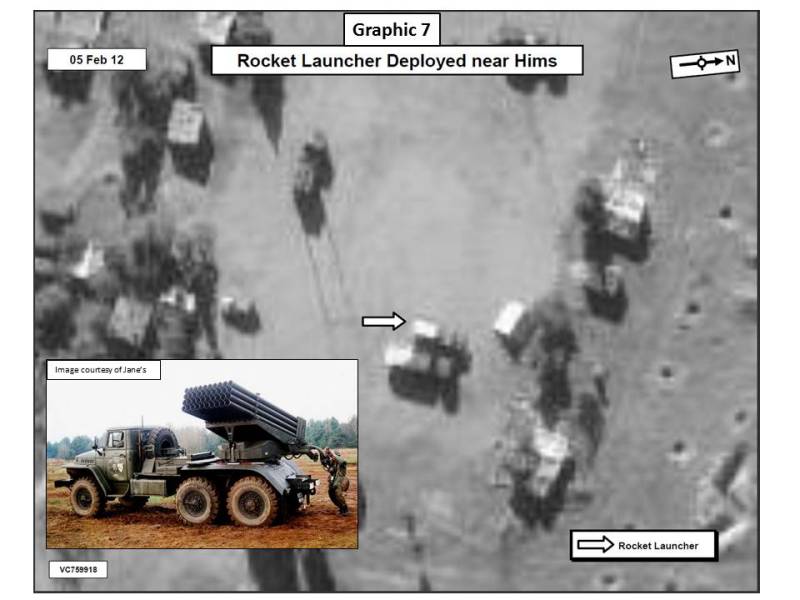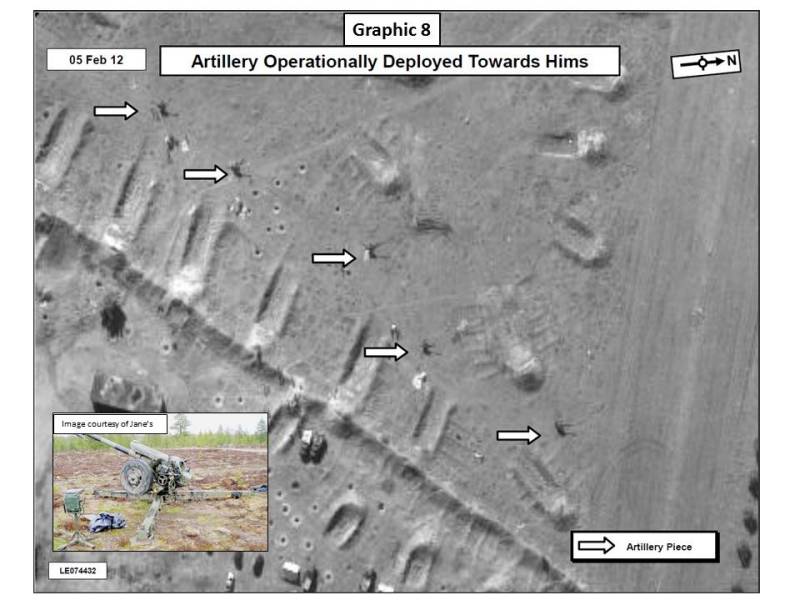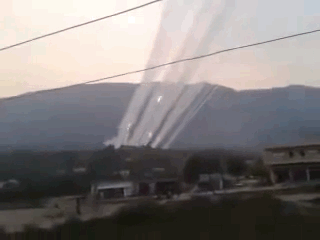Weapons of the Syrian War: Artillery
Government forces have howitzers, rocket launchers, even SCUD missiles. Rebels have responded with the improvised weapons called Hell Cannons.
Editor's note: This series examines 10 categories of arms used in the Syrian conflict, a ghastly proving ground for much of what 21st-century militaries and militant groups can bring to war.
First use: Early February 2012. Syrian artillery attacked Homs, the hub of the so-called Free Syrian Army and “capital of the revolution.”


U.S. State Department satellite imagery released on Feb. 11, 2012, above , shows artillery on the outskirts of Homs and elsewhere in southern Syria. Artillery used in the attack included 2S3 154.2mm self-propelled howitzers, M-46 130mm towed guns, D-30 122mm howitzers, 2S1 122mm self-propelled howitzers, and BM-21 122mm multiple rocket launchers firing GRAD rockets from positions outside the city.
The attack killed more than 200 civilians. Two weeks later, another bombardment hit the city with at least 250 shells and rockets.

A barrage of GRAD rockets purporting to be from late 2015. (Note: The GIF here lasts 5 seconds; the
source video
is 48 seconds of this.)
Assad regime escalates to SCUDs: In winter 2012, government forces fired SCUD rockets from a base north of Damascus at a rebel base north of Aleppo, nearly 220 miles away, Obama administration officials told The New York Times .
In February 2013, more "SCUD-like" attacks were reported to the north in Aleppo. But the munitions turned out to Luna-M/Frog-7 ballistic rockets, unguided after launch (FROG=Free Rocket Over Ground) and not terribly accurate .
Why use ballistic missiles at all? They’re terrifying, as this video from January 2013 shows:
Rebel groups innovate: As the war dragged into its its third year in 2014, rebels responded with artillery of a desperate yet resourceful kind. They began firing gas cylinders, water heaters, and anything they could pack with explosives toward government-held suburbs across Syria. Such weapons, still in use to this day, became known as Hell Cannons . There is no shortage of videos of them on YouTube.
Overview | Small Arms | Tanks | Artillery | Airpower (Syrian) | Anti‑Aircraft Weapons | Barrel Bombs | Chemical Weapons | Airpower (Non‑Syrian) | Cruise Missiles | Suicide Bombers | Advisors
NEXT STORY: Weapons of the Syrian War: Airpower (Syrian)



